Vienna may be a city laden with history, there is certainly no shortage of contemporary art galleries and off-spaces, the latter of which are listed in the Independent Space Index and merit a separate study to do justice to their richness and diversity. But once again, it is apparent how the two art scenes – profit and non-profit – can be mutually beneficial. For many, generous financial government support may be an extra shot in the arm to launch new initiatives, from which the commercial circuit ultimately benefits as well, but how many galleries and fairs do we actually need? Vienna currently boasts three art fairs: SPARK, which took place for the first time in June this year, viennacontemporary, held every September, and the off-fair PARALLEL which ironically now takes place the week after viennacontemporary. It begs the question: isn't all this too much of a good thing? Doesn't the Vienna art world lose in quality what it gains in quantity?
Viennacontemporary
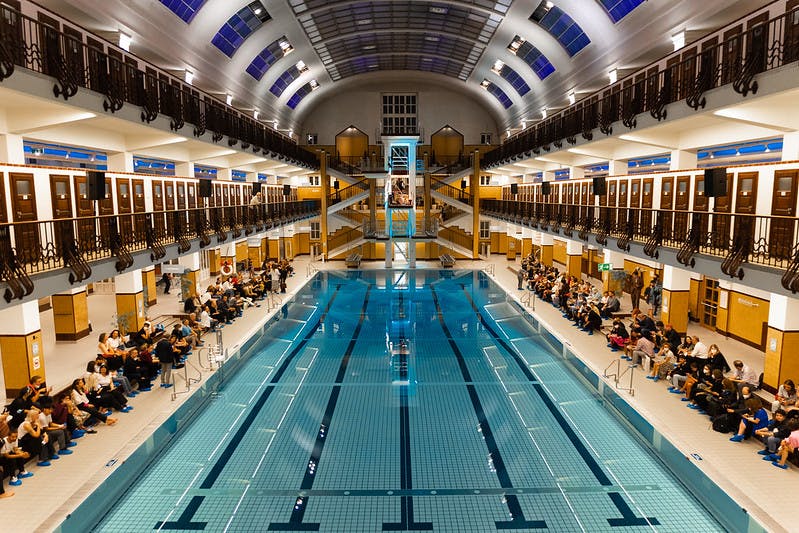
Viennacontemporary is a fair that started in 2015 in the expansive Marx Halle – where SPARK now takes place – but has been in the doldrums for the last couple of years. There has been quite a high turnover of artistic directors, and during the Corona pandemic, it was decided to set up online viewing rooms and start an online magazine. Death throes, you could say, of a business model that was perhaps due a change some time ago. Having said that, a geographical focus on the Central and Eastern European art scene has great potential. In June of this year, it was decided to appoint Boris Ondreička as artistic director, a bold move that should give the fair a new impetus. It was also decided to bring the fair forward to early September and to have it coincide with the international gallery festival, Curated By. The choice in favour of Ondreička gave many gallerists – among others with grande dame Ursula Krinzinger – new hope about the fair format, rightly so. What is interesting about his profile is his hybrid character, as an artist, theoretician, singer and equally as a curator, among others for Soros centre for contemporary arts in Bratislava and Thyssen-Bornemisza Art Contemporary in Vienna, where he has curated several exhibitions. Hailing from the underground scene, Ondreička works for the economic elite, and – as a full-blooded accelerationist – has absolutely no problem with that. The distinction between mainstream and underground, between art market and artist-run, is today only an illusion, as he argued in a recent interview:
“[T]hese days, there’s absolutely no strict division between what is official and what is not official – so even if we’re talking about off-spaces which we would like to integrate into our fair both mentally and intellectually to add to the whole cosmology of our activities, it doesn’t mean that those things are not official. These things only operate on different production and economical bases.”
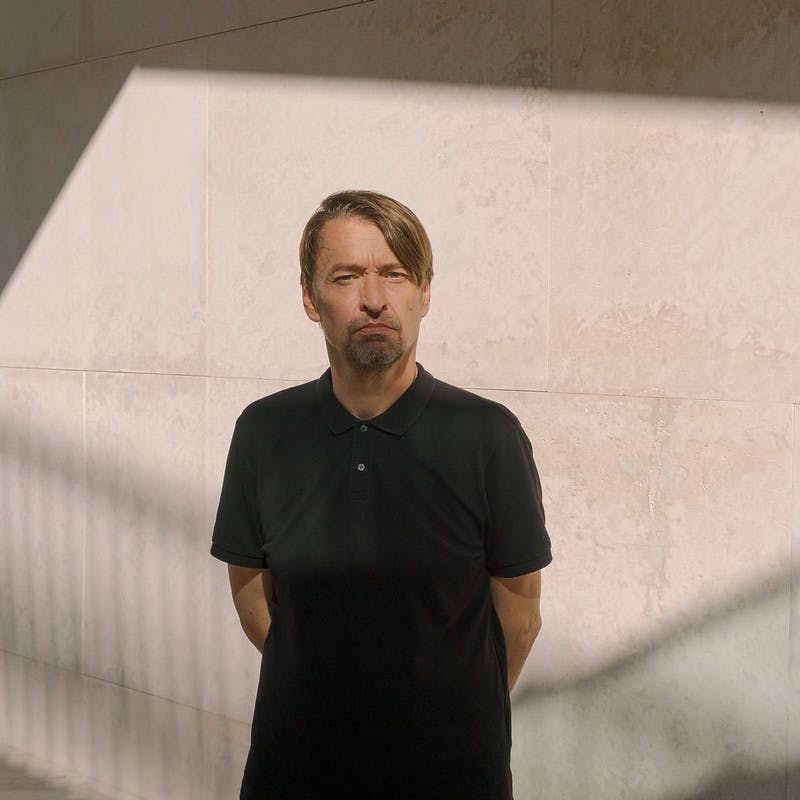
Yet, this year too, a few eyebrows were raised during viennacontemporary, especially in the local press, which did not mince its words. This may have something to do with the location: the Alte Post, a former post-office building that is currently completely scaffolded and will, therefore, not be to everyone's taste, particularly the high-heeled or smart-suited visitors. And admittedly, the rigorous booth scenography often felt claustrophobic. The question, however, is what Ondreička could actually accomplish in the limited timeframe of a few months. He will be able to make his mark in the long run, for sure, so it is better to give him the benefit of the doubt at this point – and the doubt has many advantages. It smacks of viennacontemporary wanting to buy street cred by choosing Boris Ondreička, but a profile like his – especially as a pivotal figure between Eastern and Western Europe – is still much more reassuring than the appointment of a manager without any artistic or substantive vision.
All criticism aside, I hear from reliable sources that the 2021 edition of viennacontemporary was very lucrative. And for many, that is what counts at the end of the day. Or as a young gallery owner – who showed a series of paintings for the occasion – told me winking: “Art must hang”, after a famous quip by Martin Kippenberger. I like his cheerful cynicism, and the context makes it even better. Kippenberger once bought an early series of six aluminium smiley faces by Andrea Fraser at the former Galerie Christian Nagel in Cologne. When he tried to hang them in the Paris Bar in Berlin, the works kept falling down. Kippenberger then made it very clear to Fraser: Kunst muß hängen (Art must hang). In 2001, Fraser took this as an invitation to re-enact in the gallery a spontaneous, drunken dinner speech Kippenberger had given in 1995 in the Austrian Club an der Grenze.
Curated By
For many galleries and fairs, the fact that art must hang is self-evident, but in the case of Kippenberger and Fraser – for whom art and life are very much intertwined – the statement can only be appreciated with some irony. Curated By, the annual, publicly funded event in which Viennese galleries invite international curators to put together exhibitions, chose comedy as its leitmotif this year. The starting point for the content is an essay on the subject by Estelle Hoy, written in a pointed and slightly provocative style. The appointed curators responded, in turn, by presenting a sophisticated ensemble of artworks in the gallery space, often accompanied by poorly written or self-congratulatory curatorial statements. And as if there was not already enough discursive leverage, most galleries decided to display the comedy-themed issue of Texte zur Kunst at the reception and post interviews with the curators on the website. Art must hang within a discursive framework, what an unyielding premise! Anyway, a number of exhibitions were nevertheless convincing.
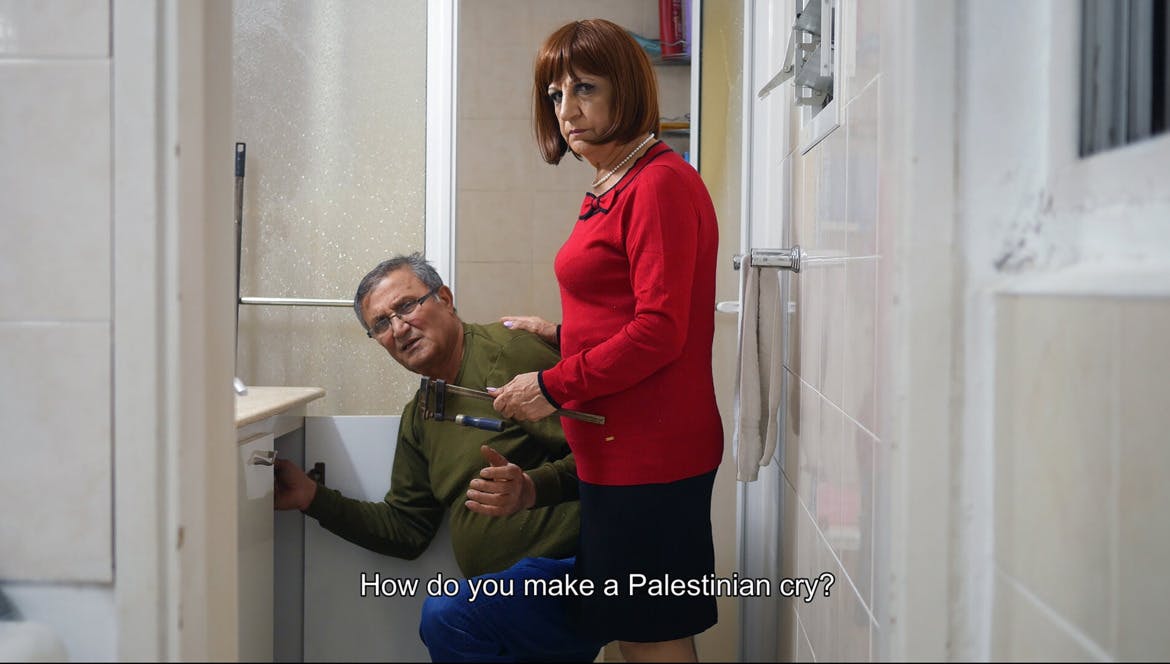
For example in EXILE, where curator Cindy Sissokho made This is a love poem. From a black feminist perspective, she explores the limits of humour in the works of young artists such as Autumn Knight, Mona Benyamin, Rosa-Johan Uddoh and Tanoa Sasraku. Some of the works can be viewed online on the newly launched EXILE TV. A special mention should also go to Francesco Tenaglia, who brings together a number of art practices at VIN VIN Gallery in a more subdued and poetic way, including graphic talent J. Parker Valentine and young revelation Isabella Costabile. A more original approach by Francesco Pedraglio, who focuses on myth as a form of visual thinking, is also to be found at Galerie Martin Janda, where strong works by Sophie Jung, Lukas Thaler and Simon Dybbroe Møller, alongside spoken word contributions by Holly Pester and Luis Felipe Fabre, among others, can all be admired. At Galerie Hubert Winter, the works of Lebanese artist Charbel-Joseph H. Boutros are not to be missed. Finally, it seems no coincidence that the best exhibition during Curated By was put together by an artist, Jannis Varelas, who was given carte blanche in the project space of Galerie Krinzinger (Schottenfeld). The result is called On the level or the man who fell out of bed, a mischievous exhibition that manages to undermine the pedantic sérieux with numerous top works by John Bock, Atelier Van Lieshout, Mike Kelley & Paul McCarthy, Meret Oppenheim, Jon Rafman, Paul Thek and Varelas himself, among others.
Kunsthalle Wien
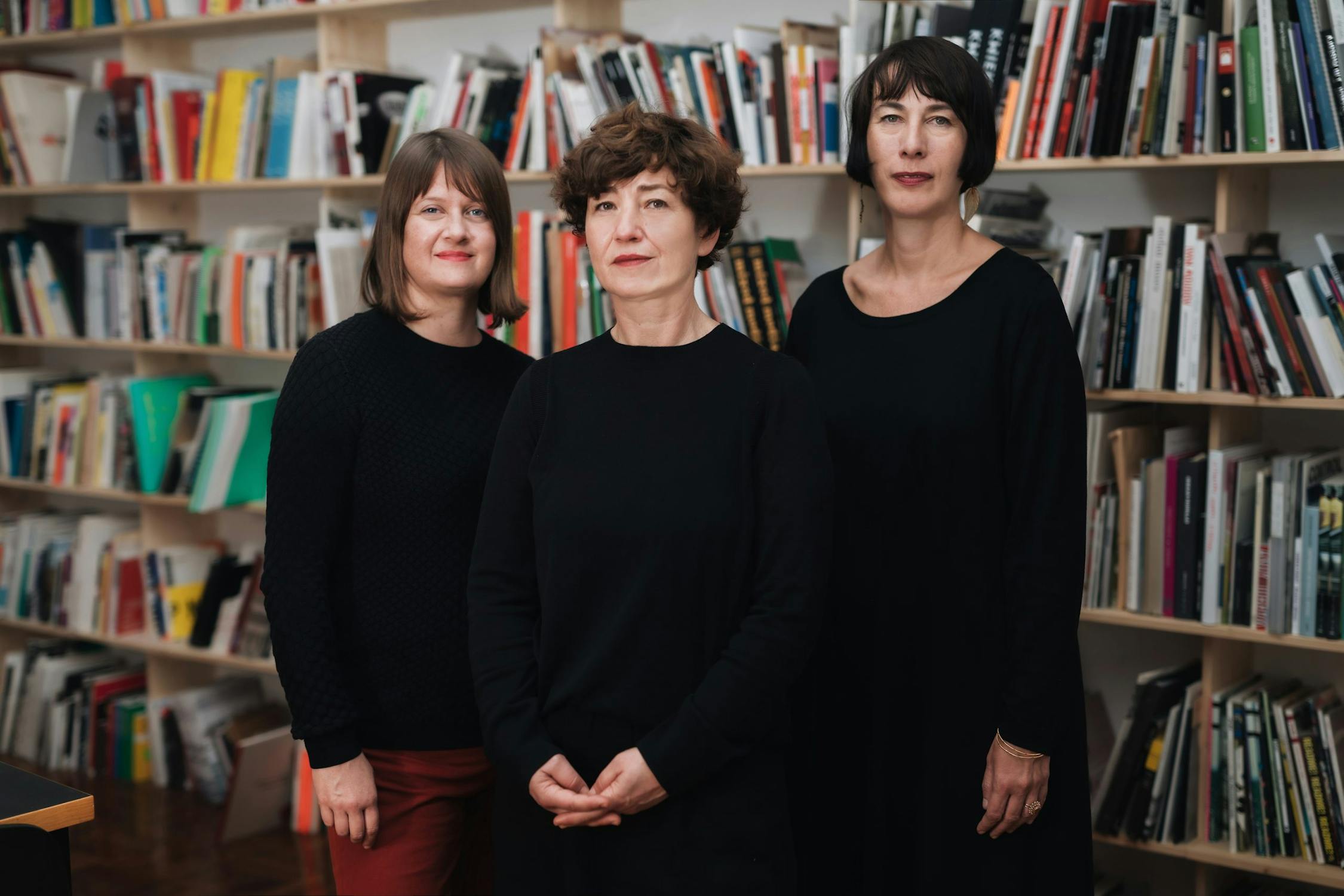
Before leaving Vienna, I am meeting Ivet Ćurlin, one of the members of the collective WHW (What, How & for Whom) at the Kunsthalle Wien. More than two years ago, Nicolaus Schafhausen stepped down as artistic director of the Kunsthalle, out of concern for the advancing nationalism in Austria. A bizarre argument at first sight, given that the institution is funded entirely by the city of Vienna (with a socialist regime). But his radical decision does say something about the so-called 'Orbánisation' of Austria under the current conservative-green coalition government, with populist Sebastian Kurz at the helm for the second time. With Schaffhausen’s departure in 2019, a completely new management model was put in its place: the collective thinking and acting of WHW. Three female members of the curatorial collective, founded in Zagreb in 1999, call for more plurality within the artistic programme and want to enter into a dialogue with different communities, rather than opt for an explicitly discursive course. In doing so, they stay true to three basic economic principles derived from Marx that have informed their practice from the beginning: what, how and for whom.

At the beginning of 2020, the programme was given a major boost with a conference and performances, followed by the first group exhibition ... of bread, wine, cars, security and peace that opened on International Women's Day, but unfortunately had to close prematurely for well-known reasons. The central question – that of the possibility of the "good life" – proved nonetheless to be very topical. What if I devoted my life to one of its feathers?, the title of the current exhibition, is taken from a poem by Cecilia Vicuña, with Miguel A. López as curator. The overarching theme is rather general, but that is understandable for such an extensive presentation as this, with some forty participating artists.
Many works emphasise the ecological potential of indigenous knowledge in restoring human relationships to nature and to each other. At the centre of the immense art hall hangs a beautiful work by Vicuña: Burnt Quipu (2018), gigantic woollen cords with knots in them that evoke the colour palette of forest fires. Quipus were used by the Incas to represent and record all kinds of information – a kind of script, in other words. Various indigenous artistic practices are included in the exhibition – such as those of the Peruvian Santiago Yahuarcani and Roldán Pinedo/Shöyan Sheca, which leads to a pleasant visual and content-related dialogue. Furthermore, López looks at artists who approach politics from a poetic angle, as in the evocative film Pre-Image (Blind as the Mother Tongue) (2017), which Hiwa K previously produced for documenta 14.
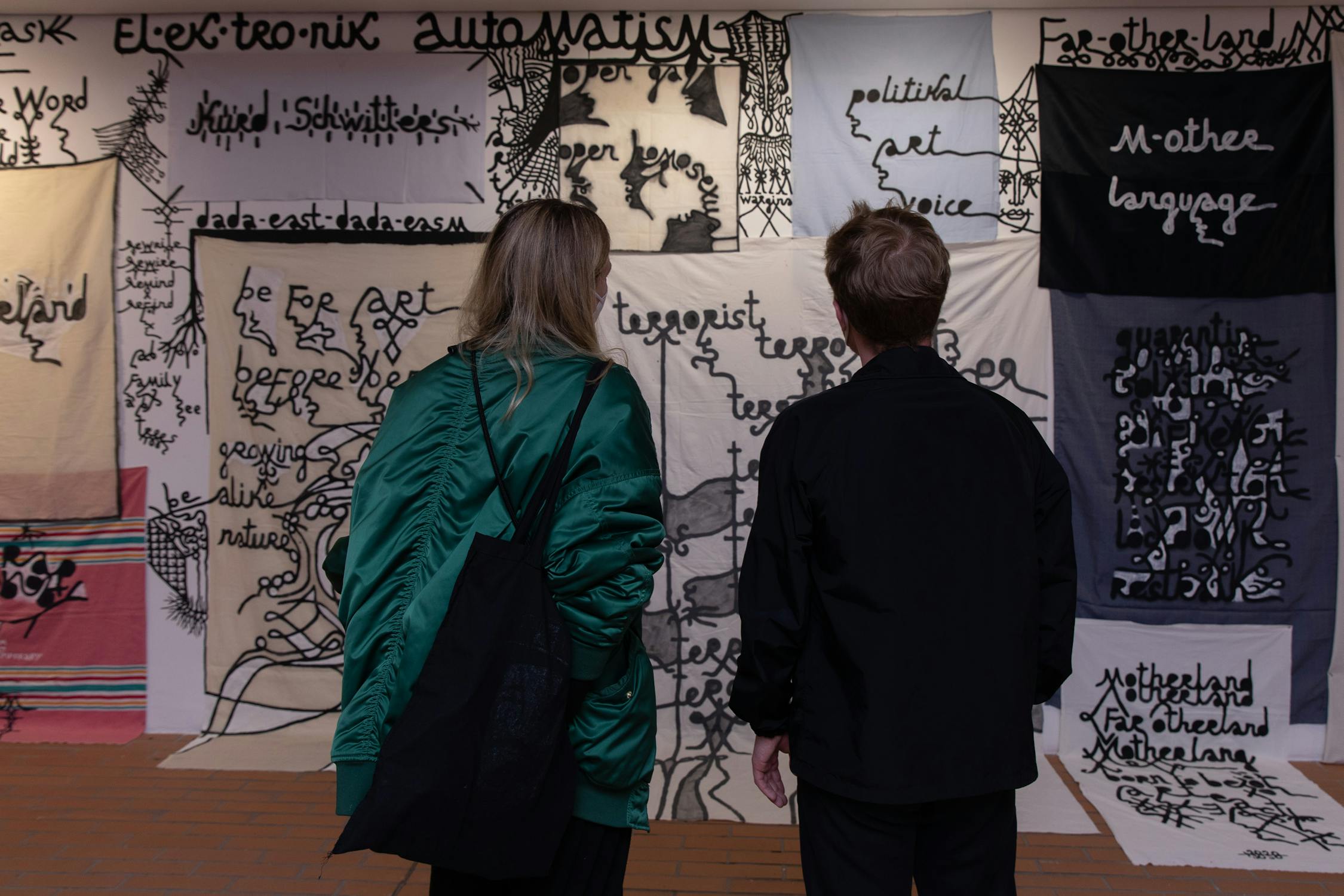
In the entrance hall of the Kunsthalle, we can admire the new installation M-otherland (2021) by Azerbaijani-born artist Babi Badalov, who experienced journeying as a refugee first-hand. His idiosyncratic visual poetry bears witness to the inevitable confusion of tongues and, at the same time, the impossible return. A more activist undertone can be found in the work of Victoria Santa Cruz, with her iconic poem Me gritaron: ¡Negra! (1978), or with Zapantera Negra, an international group of artist-activists who link the legacy of the Zapatista National Liberation Army (Mexico) with that of the Black Panther Party (USA).
As even Ivet Ćurlin herself agrees, the roll-out of a new collective model for the Kunsthalle Wien is far from evident, but the choice in favour of WHW at this point in time is to be welcomed. Hopefully, a different methodological approach will also manage to leave a lasting mark in the future. In which socio-political climate this will happen is hard to say, but as it is with climates, we all bear our own responsibility.